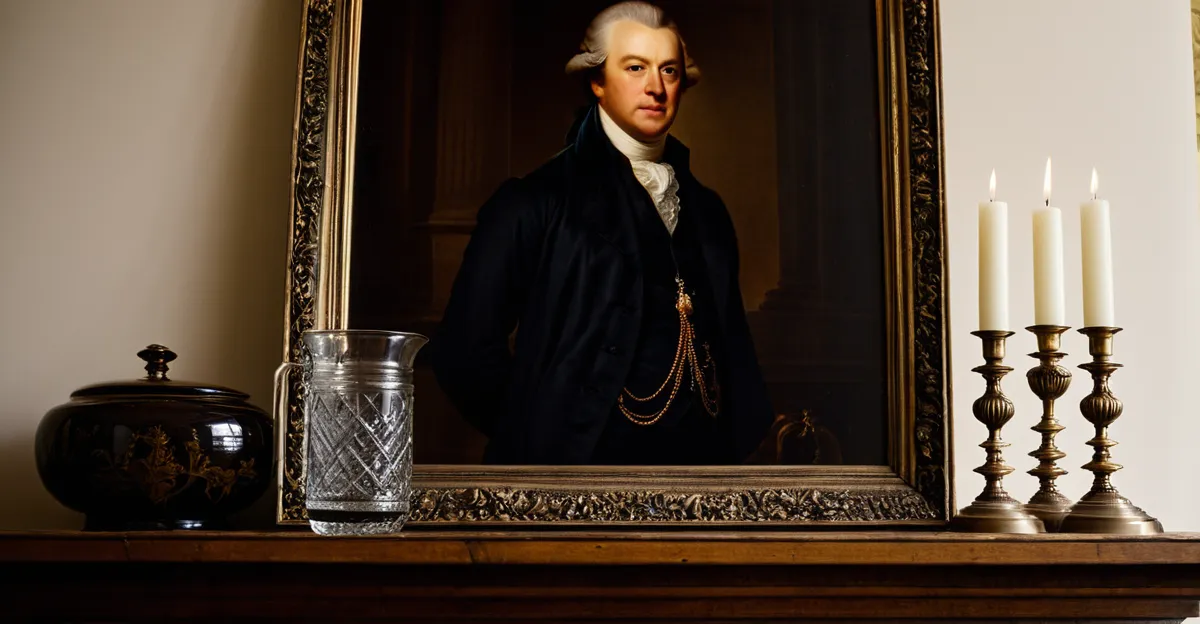Incorporating British Heritage into Your Home Decor: A Guide to Timeless Elegance
When it comes to home decor, few styles evoke the same sense of tradition and sophistication as British heritage. From the rustic charm of English country homes to the opulent grandeur of British colonial mansions, there are numerous ways to bring a piece of Britain’s rich history into your home. Here’s a comprehensive guide to help you incorporate British heritage into your interior design.
Understanding British Heritage Styles
Before diving into the specifics of decoration, it’s essential to understand the various styles that fall under the umbrella of British heritage.
Also read : How Can Innovative Home Decor Enhance Your Living Space?
English Country Style
English country style is characterized by its warm, inviting, and often rustic aesthetic. This style typically features:
- Natural Materials: Wood, stone, and brick are common materials used in English country homes.
- Soft Colour Palette: Earthy tones such as greens, blues, and yellows dominate the colour scheme.
- Traditional Furniture: Pieces like armchairs, sofas, and wooden tables are often adorned with floral patterns and plush cushions.
- Gardens and Florals: The integration of natural elements, such as flowers and greenery, is a hallmark of this style.
British Colonial Style
British colonial style, on the other hand, reflects the influence of British colonial history and is marked by:
Additional reading : How Can Eco-Friendly Practices Transform Your Home Environment?
- Grandeur and Opulence: High ceilings, large windows, and ornate details are characteristic.
- Dark Wood and Leather: Furniture often features dark wood and leather upholstery.
- Rich Fabrics: Velvet, linen, and other luxurious fabrics are commonly used.
- Exotic Motifs: Elements like palm trees, tropical flowers, and other colonial motifs are often incorporated.
Cottage Style
The cottage style is a more whimsical and cozy interpretation of British heritage:
- Quaint and Cozy: Small, intimate spaces with low ceilings and fireplaces.
- Pastel Colours: Soft pastel shades and white paint are typical.
- Vintage Furniture: Antique or vintage pieces with a distressed finish.
- Floral Patterns: Floral patterns on fabrics, wallpapers, and ceramics are prevalent.
Choosing the Right Furniture
Furniture is a crucial element in capturing the essence of British heritage in your home decor.
Traditional Pieces
- Armchairs and Sofas: Look for pieces with classic designs, such as Chesterfield sofas and armchairs with rolled arms.
- Wooden Tables: Oak, pine, and walnut are popular woods for tables and other furniture.
- Four-Poster Beds: A classic feature in many British heritage homes, especially in colonial and country styles.
Modern Interpretations
For a more modern take on British heritage, consider:
- Reclaimed Wood: Using reclaimed wood for furniture adds a touch of history and sustainability.
- Contemporary Fabrics: Update traditional patterns with modern fabrics that still evoke the classic look.
- Mixed Styles: Blend traditional pieces with modern designs to create a unique and eclectic look.
Colour and Paint
The colour palette is a key aspect of any interior design, and British heritage styles offer a rich array of options.
Traditional Colours
- Earth Tones: Greens, blues, and yellows are common in English country and cottage styles.
- Rich Hues: Deep reds, blues, and greens are characteristic of British colonial interiors.
- Neutral Shades: Whites, creams, and soft grays provide a backdrop for other decorative elements.
Modern Twists
- Bold Accents: Use bold colours as accents to add a modern touch to traditional rooms.
- Monochromatic Schemes: A monochromatic colour scheme can make a room feel more contemporary while still honoring traditional hues.
- Wallpaper: Traditional British wallpapers, such as those designed by William Morris, can add a touch of heritage to any room.
Adding Decorative Touches
Decorative elements can significantly enhance the British heritage look in your home.
Patterns and Textiles
- Floral Patterns: Floral patterns on fabrics, wallpapers, and ceramics are a staple of British heritage styles.
- Stripes and Plaids: These classic patterns can add a touch of tradition to any room.
- Luxurious Fabrics: Use high-quality fabrics like velvet, linen, and cotton to add depth and texture.
Accessories
- Antiques and Vintage Items: Incorporate antique or vintage items to add authenticity to your decor.
- Art and Prints: Hang prints or paintings that reflect British culture and history.
- Natural Elements: Bring in natural elements like potted plants, flowers, or even a vase with fresh branches.
Practical Advice from Interior Designers
Here are some practical tips from interior designers to help you incorporate British heritage into your home decor:
Mixing Styles
“Mixing different styles can create a unique and interesting space. For example, pairing a traditional armchair with a modern coffee table can add a touch of modernity to a classic room,” advises Sarah Jones, an interior designer specializing in heritage styles.
Using High-Quality Materials
“High-quality materials are essential for creating a space that feels authentic and luxurious. Look for natural materials and high-quality fabrics to ensure your decor stands the test of time,” suggests Tom Smith, a renowned interior designer.
Balancing Elements
“Balance is key when incorporating different elements of British heritage. Make sure not to overdo it with too many patterns or too much furniture. Leave some space for the eye to rest,” recommends Emily Brown, an interior designer with a focus on traditional styles.
Examples and Anecdotes
A Classic English Country Home
Imagine a cozy English country home with a living room that features a large stone fireplace, plush armchairs in floral patterns, and wooden tables with a rustic finish. The walls are painted in a soft green hue, and the room is filled with natural light pouring in through large windows. This setting epitomizes the warm and inviting nature of English country style.
A Modern Take on British Colonial
In a modern home, you might see a British colonial-inspired living room with high ceilings, large windows, and dark wood furniture. However, instead of traditional leather upholstery, the furniture might be adorned with contemporary fabrics featuring tropical motifs. This blend of old and new creates a unique and stylish space that honors the past while embracing the present.
Detailed List of Elements to Incorporate
Here is a detailed list of elements you can incorporate to bring British heritage into your home decor:
-
Furniture
-
Traditional armchairs and sofas
-
Wooden tables and chairs
-
Four-poster beds
-
Reclaimed wood pieces
-
Contemporary fabrics with traditional patterns
-
Colour and Paint
-
Earth tones (greens, blues, yellows)
-
Rich hues (deep reds, blues, greens)
-
Neutral shades (whites, creams, soft grays)
-
Bold accent colours
-
Monochromatic colour schemes
-
Traditional wallpapers (e.g., William Morris designs)
-
Decorative Touches
-
Floral patterns on fabrics, wallpapers, and ceramics
-
Stripes and plaids
-
Luxurious fabrics (velvet, linen, cotton)
-
Antiques and vintage items
-
Art and prints reflecting British culture and history
-
Natural elements (potted plants, flowers, fresh branches)
Table: Comparing British Heritage Styles
| Style | Characteristics | Furniture | Colour Palette | Decorative Elements |
|---|---|---|---|---|
| English Country | Warm, inviting, rustic | Armchairs, sofas, wooden tables | Earth tones (greens, blues, yellows) | Floral patterns, natural elements |
| British Colonial | Grand, opulent, exotic | Dark wood furniture, leather upholstery | Rich hues (deep reds, blues, greens) | Tropical motifs, luxurious fabrics |
| Cottage Style | Quaint, cozy, whimsical | Vintage furniture, distressed finish | Pastel colours, white paint | Floral patterns, vintage items |
Incorporating British heritage into your home decor is a journey through history, tradition, and elegance. Whether you opt for the rustic charm of English country, the grandeur of British colonial, or the whimsy of cottage style, there are countless ways to bring a piece of Britain’s rich heritage into your home. By choosing the right furniture, colours, and decorative touches, you can create a space that is both timeless and uniquely yours.
As William Morris, a pioneer of the Arts and Crafts movement, once said, “The true secret of happiness lies in the taking a genuine interest in all the details of daily life.” By taking an interest in the details of British heritage and incorporating them into your home decor, you can create a space that is not only beautiful but also deeply meaningful.








